The Fish Mongers of Mandalay
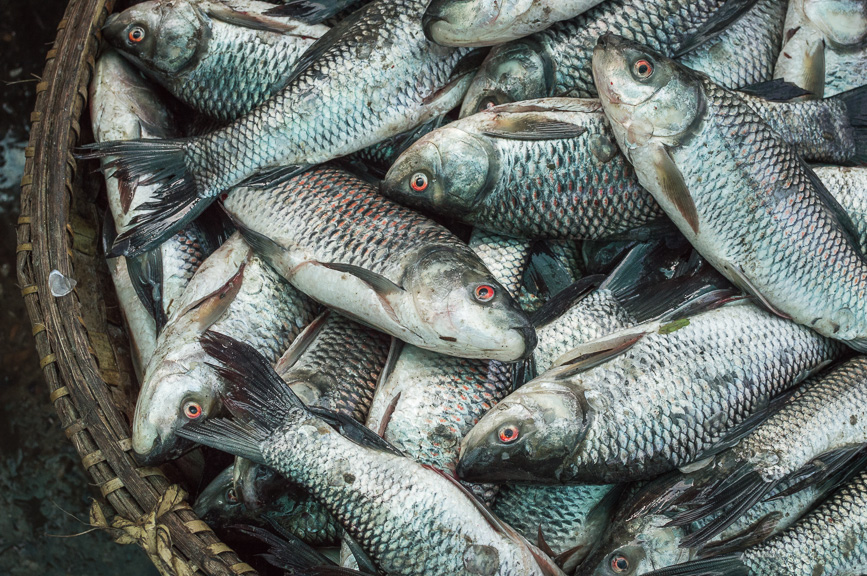
First you feel it in your toes. A slime of seawater, molten ice, soil and fish guts invade your flip-flops turning them a dull murky grey. Then it hits your nose, raw and metallic, the oxidising flesh of fish simmering in the sun’s heat. We have arrived at the wholesale fish market of Mandalay.
Along the banks of the Ayerwaddy river, one of the main lifelines of Myanmar, women wash their clothes in the muddy water and lay them out to dry on the dykes built to protect the city from the wet season, when the river swells to greater heights. We cycle along, witnessing the sleepy slum-like settlements on the left, but are quickly distracted by the loud crowd on the right. Long freshwater eel the colour of charcoal are being ruthlessly skinned one after another on a long bamboo stick, their blood oozing into the sludge coating the street. My face unwillingly scrunches up, reacting to the putrid smell and the sound of flesh being stripped from skin, but somehow this only spurs us forward. In some strange travel metamorphosis, our limits shift and we develop a perverse curiosity for discomfort. If it takes some physical discomfort to discover and learn about something, it must be worth it.
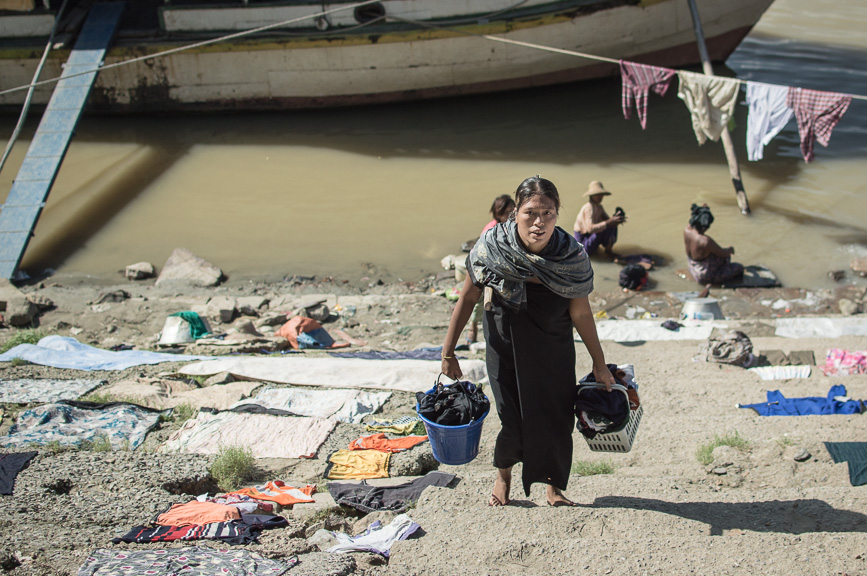
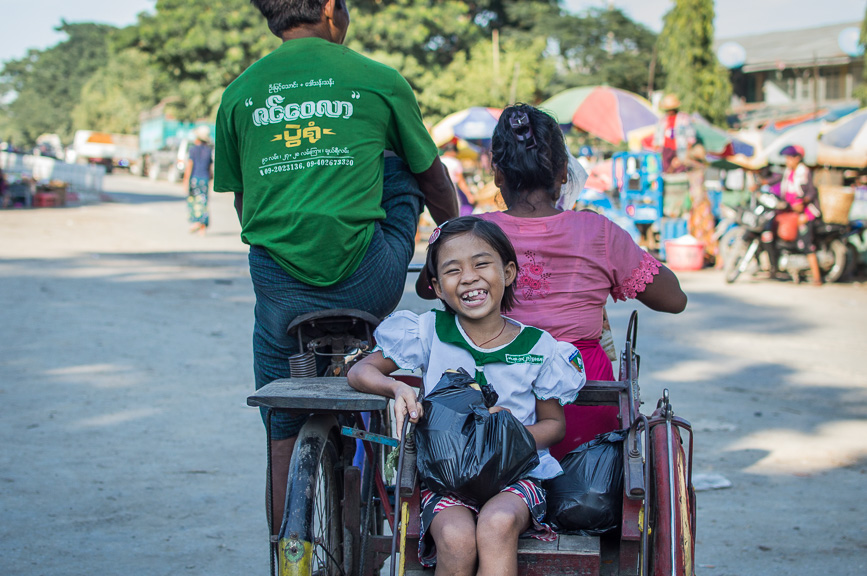
As wet mud and red betel-nut-spit splashes onto the longyi (traditional long dress) of the person before me, my gunk covered feet propel me forward into the chaos. Piles of silver fish can be spotted behind the dense forest of human ankles and feet, some in rattan baskets, some dumped in slippery mounds on spread out tarpaulin. We find out that the fresh ones are from the river, the ice covered ones from the sea. Myanmar’s long western coast brings in large Grouper fish, but here the Catfish and Carp from the river bottom dominates. There are baskets of Featherback, a favourite of local cuisine, Snakehead fish, baby Rohtee fish, Rohu, Mrigal and Grass Carp. Some Catfish are thrashing about in their plastic buckets, their sleek black whiskers sprout out from flat heads and brush up against each other, but most of the fish are silent, the breath gone from their gills, their pink eyes staring into the void.
Three-wheel trucks and motorcycles push through and part the crowd, somehow finding their way, like a snake slithering through tall grass. More splashes fly onto longyis. The flies have come to feast, some buckets of fish are so popular they look like they have had a scattering of over-sized black sesame seeds, the flies only occasionally responding to the lazy swings of a vendor, a gesture of defeat.
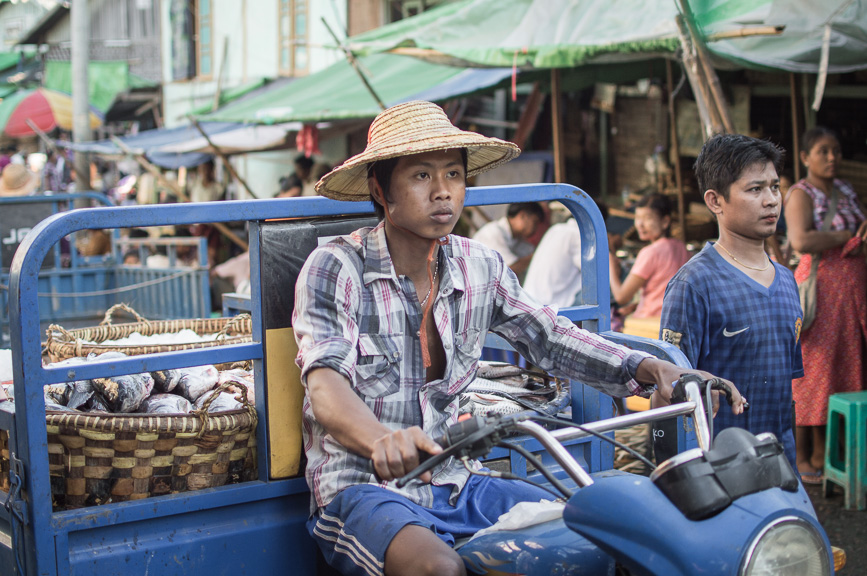
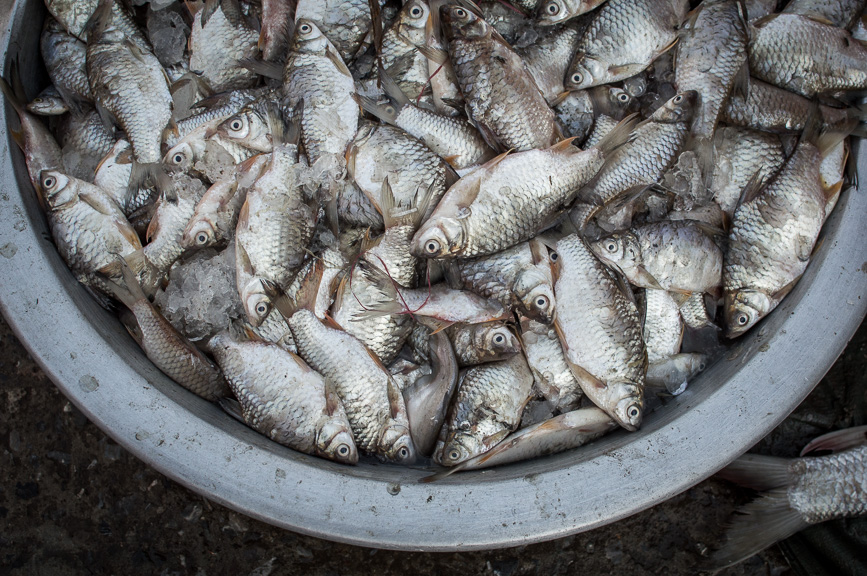
We are greeted by smiles all round. Next to the fish is a woman selling a display of knives for post-fish shopping, their wooden handles boasting one blade bigger than the next. Deep in the throngs of business, some fish are being chopped up as fillets, others are being cleaned and polished. The translucent fish scales bounce off the fish monger’s rapid blade, floating down like big fat snowflakes, before melting into the river of scales that came before them, a river of pearls through the thick mud. Women with yellow thanaka globes (traditional Burmese make up) painted onto their cheeks wave hello as money is counted, accounts completed for the day. And men on their mobile phones plan the deliveries for tomorrow.
In a corner there is a group of men playing cards. Somehow they have managed to find a spot in this tight grab for real estate.Their tattooed arms throw green and orange plastic chips onto the table, the men oblivious to the world around them. One of them seems to have a huge fishing net pattern tattooed onto his knee and thigh.
We turn into an area with more permanent stalls. A blueish green sheen adorns the already mercurial skin of the fish, the sun filtered through a giant green sheet hanging from the buildings above. Here bigger orders can be made, contracts signed with fish farms to ensure a steadier supply. Fish is the most important source of animal protein in Myanmar and also plays an important economic role through small scale fisheries. Many fish marketing systems such as one in the outskirts of Mandalay at Thaung Tha Man involve mostly women who fish for two days and sell for two days on a rotation of every five days.
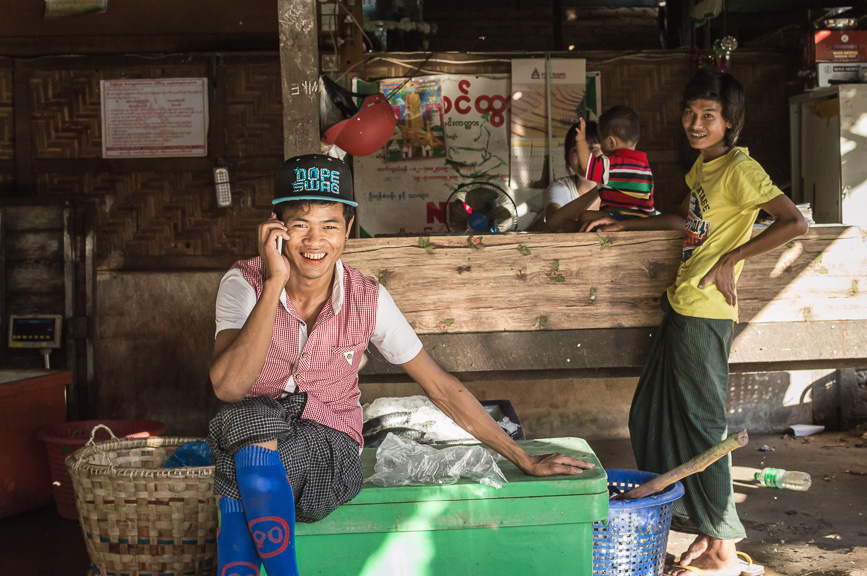
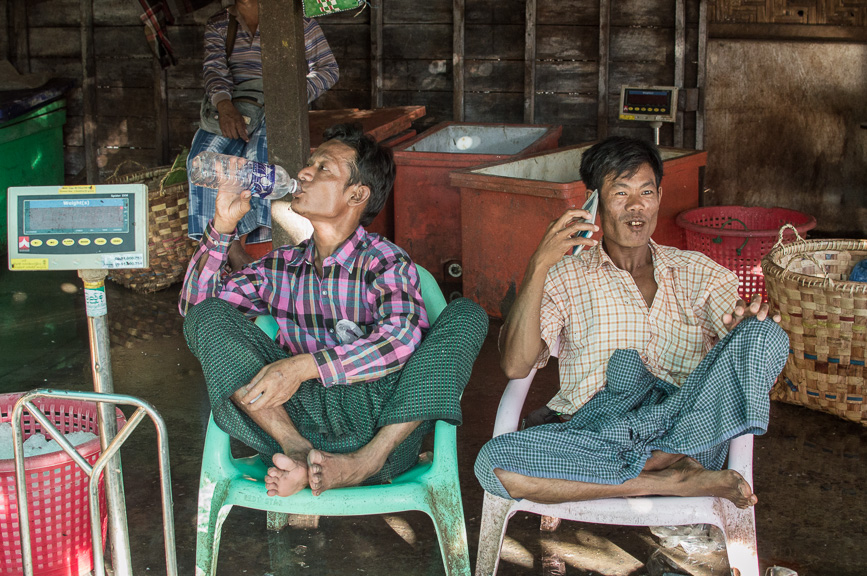
Suddenly I see a table of chickens the colour of custard, clearly out of place at this fish fiesta. They have been decapitated, broiled and de-feathered, while somehow managing to remain petrified with their legs sticking straight out, rigid corpses crying for help. Unfortunately I cannot help it, I point and laugh at this bizarre tragedy and the vendor laughs along with me, a moment of “bonding” over awkward bodies.
We turn towards another street and a woman grabs my wrist. She looks up at me, smiles and says something I cannot comprehend, but I follow. In a side alley next to a pickup truck, veiled women are storing left over fish in rattan baskets, filled to the brim with layers of ice, fish, ice, fish, ice and fish until the whole thing is covered with a thick towel and stored for another day. We all nod heads and laugh and I desperately wish we could have a chat about where they have come from and what they plan to do with their fish bounty.
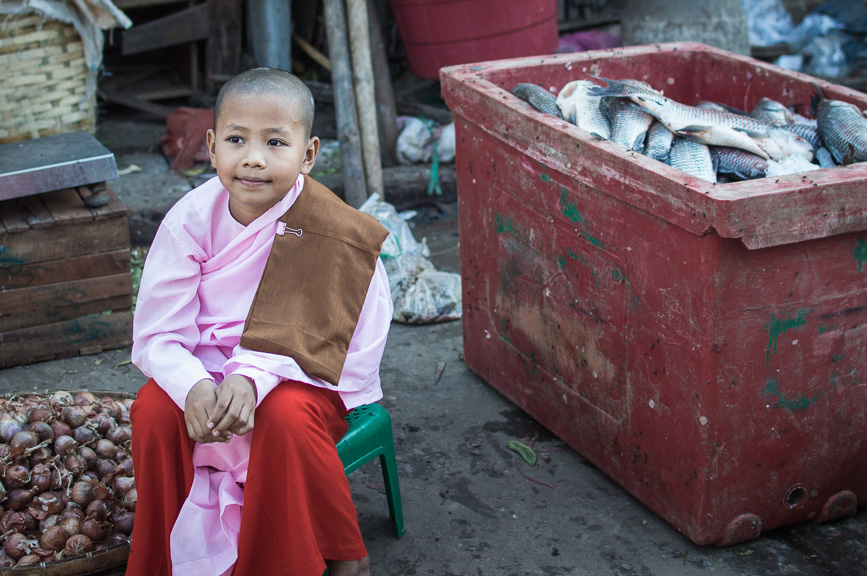
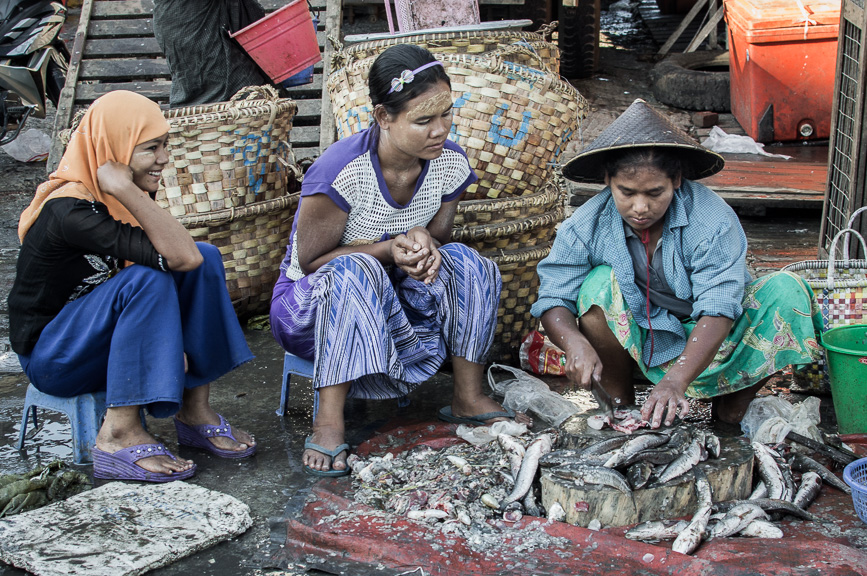

The afternoon is moving onto evening and in Myanmar that means closing time. The stream of slime is now covered with discarded banana leaves soaking up the juices, the emptying main street reveals that the lumps and bumps we felt under us are actually piles of knotted plastic bags. The stalls pull up their bamboo-held tent coverings and the shops start dragging their rusty gates firmly shut. More people smile wide at us, despite knowing that we were there to see and not buy.
Not mentioned in any guidebook or tourist map, stumbling upon this fish market was our highlight of Mandalay. Always follow your gut, or in this case the fish guts. As the sun began to set and the market dwindled to almost a whisper, we left with silly grins on our face, our goo-laden feet high and impossibly light from excitement. I had also decided then and there to become a vegetarian for the rest of our stay in Myanmar.








4 Comments
tammy
January 8, 2015Lovely photos! I love the 2 men sitting together!
Nico & Gabi
April 9, 2015Thanks Tammy!
things to do in morocco
March 19, 2015amazing photos 😀 i love fishs thank for this article
Nico & Gabi
April 9, 2015Thanks, we love fish too 🙂